Do you have a question about the Manitowoc National Crane 1400A and is the answer not in the manual?
Details warm-up procedures for the crane's engine at various temperatures.
Outlines procedures for warming up the transmission in cold weather.
Describes the recommended warm-up procedure for the hoist function.
Provides warm-up procedures for swing drive and turntable bearing.
Notes that axle warm-up procedures are in the chassis manufacturer's manual.
Details operating limits and warm-up procedures for the hydraulic oil system.
Provides an overview of the operator's manual and its importance for safe operation.
Refers to additional manuals for specific information on crane features and options.
Mentions the availability of a Safety Compact Disc (CD) for National Crane operators.
Instructs users to report accidents and equipment damage immediately to the distributor.
Explains that crane parts are described using nomenclature shown in figures throughout the manual.
Highlights the importance of safety messages and symbols used in the manual.
Defines a qualified person for crane operation based on knowledge, training, and experience.
Discusses accessories that provide information or control crane functions to aid operation.
Emphasizes ensuring crane stability and structural integrity by following load charts and setup procedures.
Details dangers of operating cranes near electrical power lines and necessary precautions.
Outlines requirements and precautions for lifting personnel using crane equipment.
Provides recommendations for operating cranes in very low temperatures.
Describes controls located in the truck cab used in conjunction with crane operations.
Details the electrically operated outrigger controls and their functions.
Locates and describes the crane cab controls for all crane functions.
Explains the controls for adjusting heating and air conditioning for operator comfort.
Guides users through familiarization, equipment checks, and safe operating practices.
Explains the importance and usage of load charts for safe lifting operations.
Outlines general guidelines for making a lift after the crane has been properly set up.
Details the procedures for properly setting up the crane's outriggers for stability.
Provides essential safety information for deploying and using the jib.
Describes the deployment and stowage procedures for a side folding-swing around jib.
Provides a step-by-step procedure for installing wire rope onto the hoist drum.
Explains the types and installation procedures for wedge sockets for wire rope attachment.
Illustrates and describes ANSI-approved methods for treating the dead-ends of wire ropes.
Emphasizes the importance of lubrication for crane lifetime and utilization.
Discusses the use of petroleum-based fluids for low-temperature service.
Details how environmental conditions affect hydraulic oil and inspection intervals.
Lists lubrication points, types, procedures, and frequencies for crane maintenance.
Provides procedures for lubricating internal cable sheaves on boom sections.
Explains the necessity and methods for lubricating wire rope for longevity.
Outlines scheduled inspection and maintenance intervals for peak crane operation.
Specifies conditions requiring a complete boom disassembly and inspection.
Covers inspection criteria and frequency for hoist cable to ensure safety.
Lists reasons for wire rope replacement based on condition and damage.
Details safety precautions and procedures for performing adjustments and repairs.
Covers maintenance for oil coolers and troubleshooting hydraulic system issues.
Provides tire inflation pressures and load limits based on tire size and load range.
Lists hydraulic system requirements including flow rates, pressure, and capacity.
Details hoist system specifications including cable type and performance data.
Provides specifications for crane operating speeds like rotation and boom movements.
Details warm-up procedures for the crane's engine at various temperatures.
Outlines procedures for warming up the transmission in cold weather.
Describes the recommended warm-up procedure for the hoist function.
Provides warm-up procedures for swing drive and turntable bearing.
Notes that axle warm-up procedures are in the chassis manufacturer's manual.
Details operating limits and warm-up procedures for the hydraulic oil system.
Provides an overview of the operator's manual and its importance for safe operation.
Refers to additional manuals for specific information on crane features and options.
Mentions the availability of a Safety Compact Disc (CD) for National Crane operators.
Instructs users to report accidents and equipment damage immediately to the distributor.
Explains that crane parts are described using nomenclature shown in figures throughout the manual.
Highlights the importance of safety messages and symbols used in the manual.
Defines a qualified person for crane operation based on knowledge, training, and experience.
Discusses accessories that provide information or control crane functions to aid operation.
Emphasizes ensuring crane stability and structural integrity by following load charts and setup procedures.
Details dangers of operating cranes near electrical power lines and necessary precautions.
Outlines requirements and precautions for lifting personnel using crane equipment.
Provides recommendations for operating cranes in very low temperatures.
Describes controls located in the truck cab used in conjunction with crane operations.
Details the electrically operated outrigger controls and their functions.
Locates and describes the crane cab controls for all crane functions.
Explains the controls for adjusting heating and air conditioning for operator comfort.
Guides users through familiarization, equipment checks, and safe operating practices.
Explains the importance and usage of load charts for safe lifting operations.
Outlines general guidelines for making a lift after the crane has been properly set up.
Details the procedures for properly setting up the crane's outriggers for stability.
Provides essential safety information for deploying and using the jib.
Describes the deployment and stowage procedures for a side folding-swing around jib.
Provides a step-by-step procedure for installing wire rope onto the hoist drum.
Explains the types and installation procedures for wedge sockets for wire rope attachment.
Illustrates and describes ANSI-approved methods for treating the dead-ends of wire ropes.
Emphasizes the importance of lubrication for crane lifetime and utilization.
Discusses the use of petroleum-based fluids for low-temperature service.
Details how environmental conditions affect hydraulic oil and inspection intervals.
Lists lubrication points, types, procedures, and frequencies for crane maintenance.
Provides procedures for lubricating internal cable sheaves on boom sections.
Explains the necessity and methods for lubricating wire rope for longevity.
Outlines scheduled inspection and maintenance intervals for peak crane operation.
Specifies conditions requiring a complete boom disassembly and inspection.
Covers inspection criteria and frequency for hoist cable to ensure safety.
Lists reasons for wire rope replacement based on condition and damage.
Details safety precautions and procedures for performing adjustments and repairs.
Covers maintenance for oil coolers and troubleshooting hydraulic system issues.
Provides tire inflation pressures and load limits based on tire size and load range.
Lists hydraulic system requirements including flow rates, pressure, and capacity.
Details hoist system specifications including cable type and performance data.
Provides specifications for crane operating speeds like rotation and boom movements.
| Brand | Manitowoc |
|---|---|
| Model | National Crane 1400A |
| Category | Construction Equipment |
| Language | English |
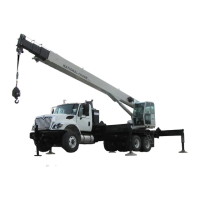

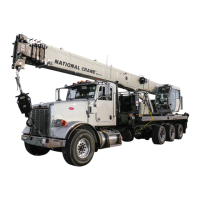
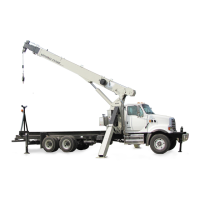


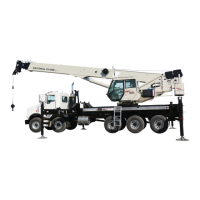
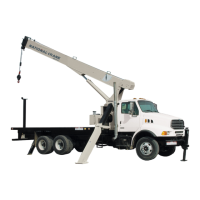
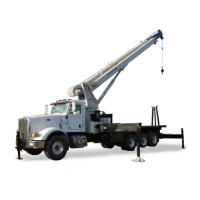
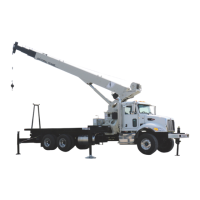

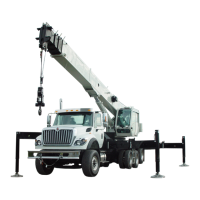
